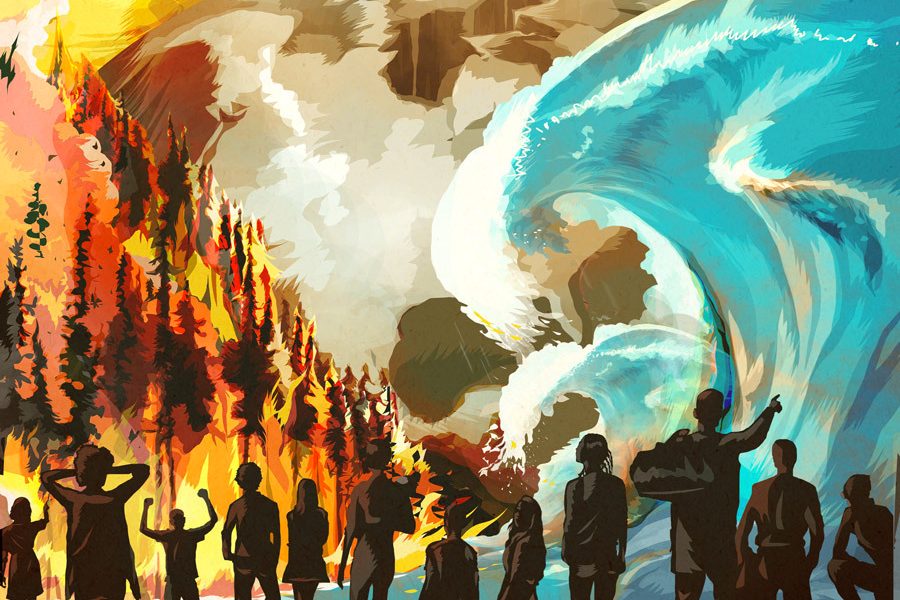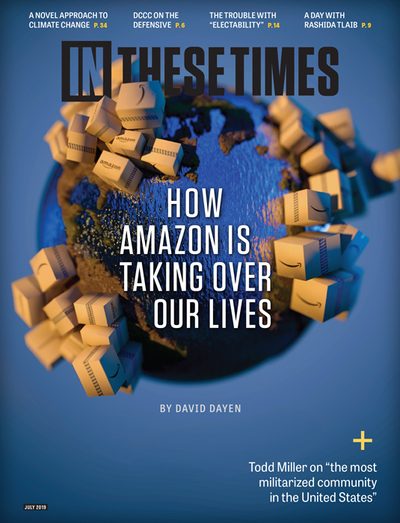Climate fiction, or “cli-fi ” as it’s sometimes called, has officially exploded onto the literary scene. The genre has been around since at least the 1960s, with such writers as Margaret Atwood, Octavia Butler and J.G. Ballard giving early narrative shape to the climate crisis. Those classic works helped inspire waves of cli-fi over the past 60 years, ranging from futuristic sci-fi to literary fiction set in the present day, and even mainstream movies. George Washington University writing professor Michael Svoboda recently listed a bevy of climate-themed films that hit theaters in 2018, including the dystopian films Downsizing starring Matt Damon and First Reformed starring Ethan Hawke.
Clearly, Americans are interested in the topic. According to a 2018 poll conducted by the Yale Program on Climate Change Communication, a record number of Americans — a full 73% — believe that climate change is happening.
Yet, according to the same poll, only 29% report being “very worried,” despite an increase in the number and severity of hurricanes and tornados, a worsening of wildfires and the spread of invasive species, even within the relatively climate-stable United States.
Why do Americans have such a hard time grasping the dire threat posed by climate change? In his 2015 nonfiction book, What We Think About When We Try Not To Think About Global Warming: Toward a New Psychology of Climate Action, psychologist Per Espen Stoknes argues it’s because politicians and the media tend to present climate change as a series of abstract facts and cold statistics, which do little to appeal to the human heart.
Where statistics-heavy media reports fall short, climate fiction writers are filling the gap. Works of cli-fi bring the present reality — and potential future — of climate change into sharper focus: floods, fires and extreme weather events are depicted as the new normal. But it’s not the science behind the crisis writers are focused on — it’s human behavior.
In a recent panel conversation I moderated that included novelist Omar El Akkad (author of the dystopian American War), one audience member asked El Akkad whether he cares about getting the science right in his work. El Akkad’s response: “I care about getting the irrationality of [human existence] right. I think if you can get people to a place where they recognize their own irrationality, you might have a shot [at convincing them to change their ways].”
By capturing that profound irrationality — the contradiction between our refusal to give up fossil fuels even while using them leads to the destruction of mountaintops, international conflict and global warming to a degree never before experienced by humans — authors like El Akkad serve as witnesses to a transformative moment in history, a moment when we are becoming aware of our disastrous influence over the natural world and what that means for the future of our society.
Matthew Schneider-Mayerson, assistant professor of environmental studies at Yale-NUS College, surveyed more than 100 U.S.-based readers and found that works of climate fiction “nudge [their] audience in a slightly more progressive direction” and that “most readers attested to the value of cli-fi as a tool for enabling the imagination of potential climate futures.” One reader, an IT administrator from Tennessee, was particularly struck by Naomi Oreskes and Erik M. Conway’s fictional history, The Collapse of Western Civilization: A View From the Future, a harrowing tale in which humans barely survive the widespread catastrophe of global warming. The reader reported that climate change “was more theoretical before. Now, while fiction, the book has made me more aware of what our planet could become.” The reader also reported “subsequently [sharing] the book with his wife and son, among others.” Other readers also reported sharing their favorite cli-fi stories with loved ones, a pattern that suggests climate fiction might be a useful tool to open dialogues about the crisis with those closest to us.
But dystopian narratives can also have a paralyzing effect on readers, despite climate fiction’s ability to drive home the gravity of the crisis. In the same study, Schneider-Mayerson writes, “From the emotions these readers described, it is clear that their affective responses were not only negative but demobilizing. While some negative emotions (such as anger) can be fuel for personal or political action, others (such as guilt, shame, helplessness and sadness) are much less likely to lead to active responses.”
In other words, the dystopian framing of cli-fi narratives might actually be undermining their potential to spur political and social change.
Schneider-Mayerson goes on, “In place of doom, psychologists suggest that climate communications be framed positively,” which “might include … ‘values and a common cause’ and ‘opportunities for innovation and job growth.’ ” Some cli-fi novels are doing just that, moving away from fire and brimstone in favor of something perhaps more politically effective: telling narratives of collective action. Schneider-Mayerson notes, “These are not the dominant themes in the nascent canon of American climate fiction, though a number of these works — especially [Barbara Kingsolver’s] Flight Behavior and [Clara Hume’s] Back to the Garden—were interpreted by readers as containing messages related to ‘preparedness and resilience.’ ”
Such cli-fi that depicts people banding together to address the climate crisis can help readers recognize the power of collective action. El Akkad’s hope of getting people “to a place where they recognize their own irrationality” might be understood this way: If we acknowledge that climate change is a product of our own collective making, then we might simultaneously realize we have the power to collectively fix it.
The mainstream film industry has yet to catch on to this “positive framing.” In a recent article in Literary Hub, Rebecca Solnit critiques the typical storyline of recent climate disaster movies: “The standard action movie narrative requires one exceptional person in the foreground, which requires the rest of the characters to be on the spectrum from useless to clueless to wicked, plus a few moderately helpful auxiliary characters. There are not a lot of movies about magnificent collective action.” Downsizing, First Reformed and Marvel Studios’ Infinity War and Endgame all feature environmental concerns, but these movies still focus on singular individuals trying to save the planet, often through superhuman means, when in reality no one person can stop climate change.
Kim Stanley Robinson’s 2017 novel New York 2140 offers one such view of meaningful collective action. The book depicts a New York City partially submerged by sea levels a full 50 feet higher than where they are in 2019. For the city’s rich elite, little has changed — they’re still making millions from their desks in high-rises. But the majority of the city’s population has begun to sour on hyper-individualism and free market ideology. As a superstorm barrels its way to New York, we see forms of collective action stir up and culminate in small movements throughout the city: Middle-class homeowners form a union and a mutual aid society coordinates the distribution of resources during storms. The city becomes home to “open universities, free trade schools, and free art schools” as New Yorkers seek to live more communally. By the novel’s end, a housing bubble bursts and an extreme weather event throws life into chaos. How New Yorkers collectively respond is best left unspoiled, but suffice it to say they maintain their hopeful determination to weather the storm, while capitalism, it seems, may be seeing its final days, amid a global movement to nationalize the world’s banks.
Of course, reading climate fiction won’t change the world alone, nor will simply imagining climate catastrophe and its potential solutions. Creating real social change requires real political action, such as the massive, youth-led Sunrise Movement, which advocates for the Green New Deal. To achieve a livable future in a climate-changed world, we need policy reforms on a global scale.
But cli-fi has the potential to inspire us to get started. Rather than be discouraged by bleak scientific reports or the doom and gloom of today’s popular climate-related films, novels like Robinson’s — and others, like Richard Powers’ 2018 The Overstory, a Pulitzer Prize winner that features an anti-logging protest camp — are leading the charge to envision new, more sustainable and compassionate social structures. Americans already know climate change is happening; now we need to believe we can band together to stop it.

I hope you found this article important. Before you leave, I want to ask you to consider supporting our work with a donation. In These Times needs readers like you to help sustain our mission. We don’t depend on—or want—corporate advertising or deep-pocketed billionaires to fund our journalism. We’re supported by you, the reader, so we can focus on covering the issues that matter most to the progressive movement without fear or compromise.
Our work isn’t hidden behind a paywall because of people like you who support our journalism. We want to keep it that way. If you value the work we do and the movements we cover, please consider donating to In These Times.





